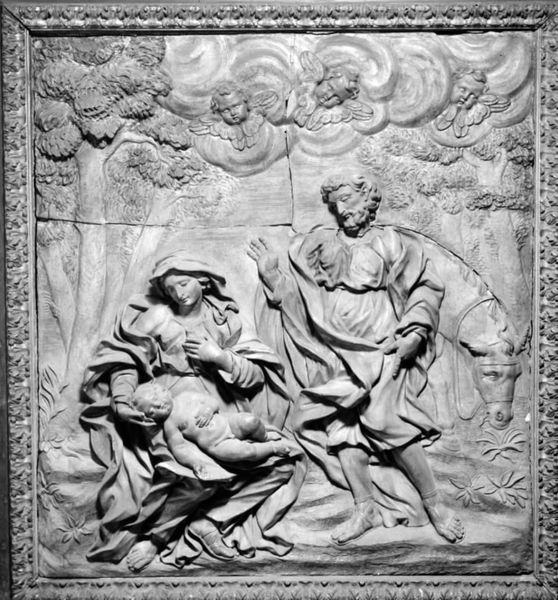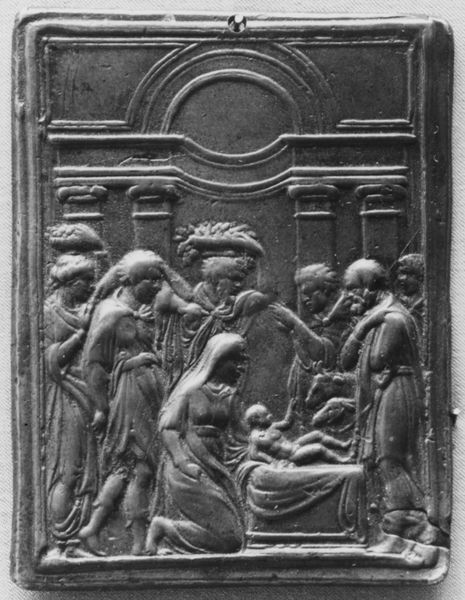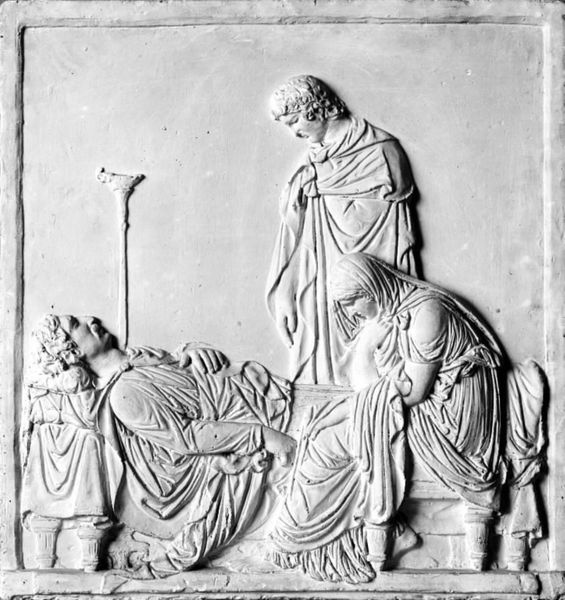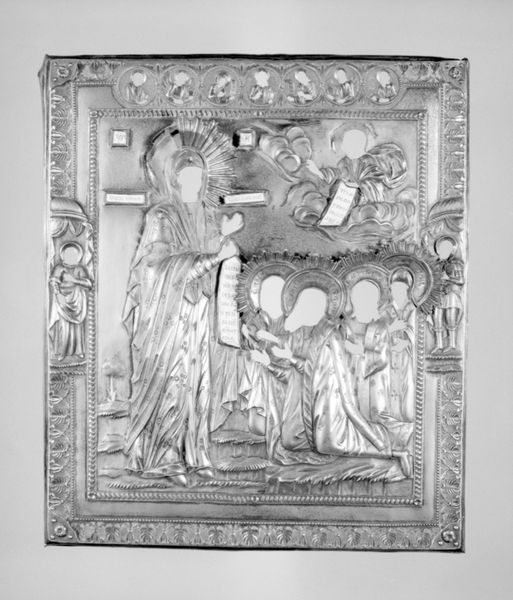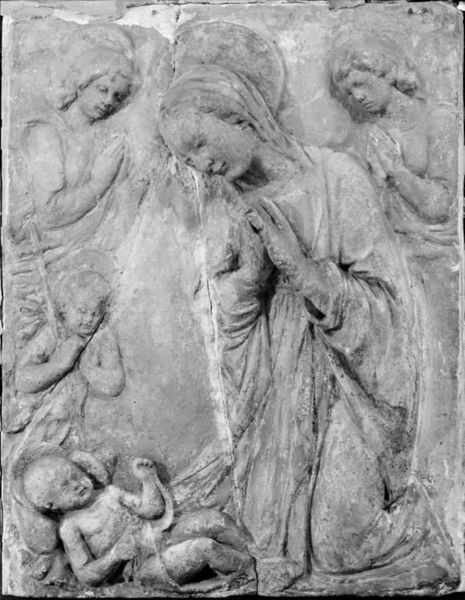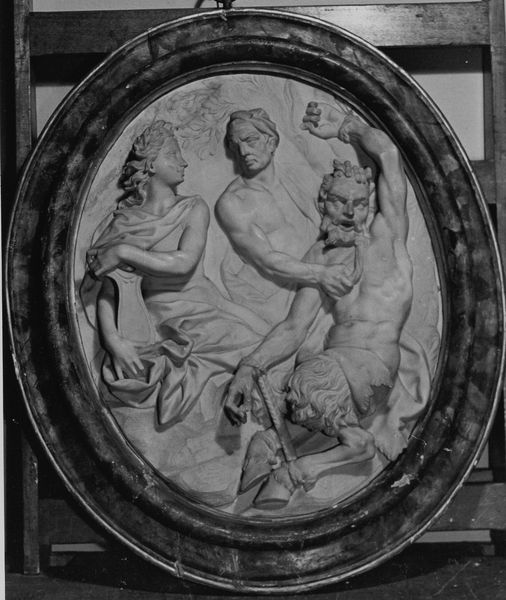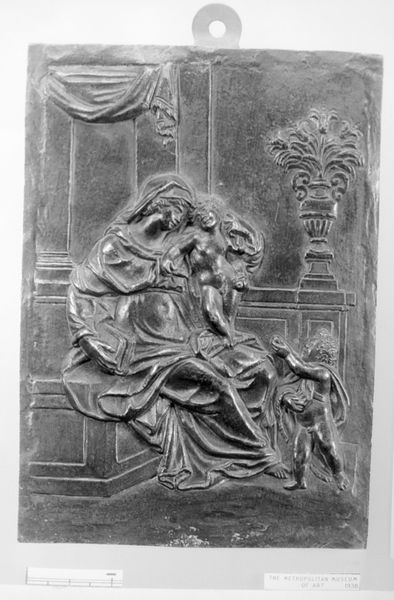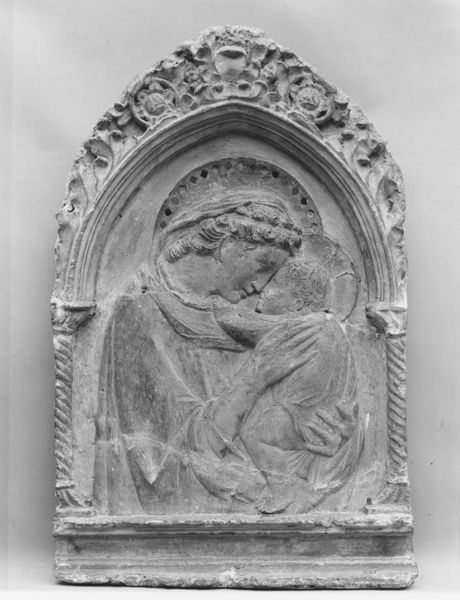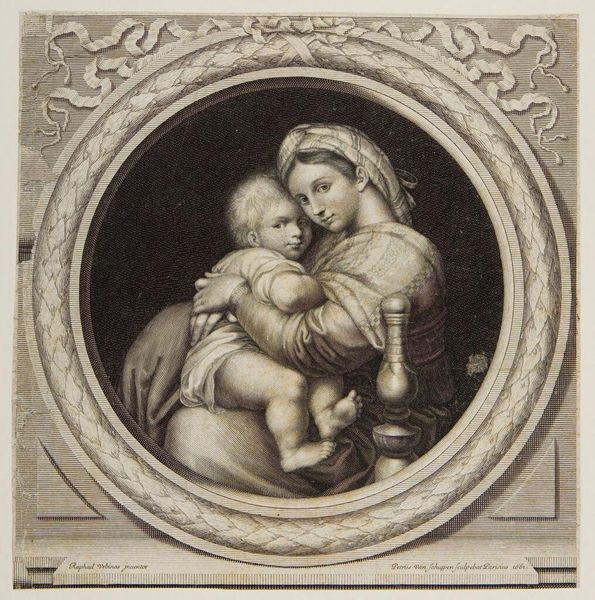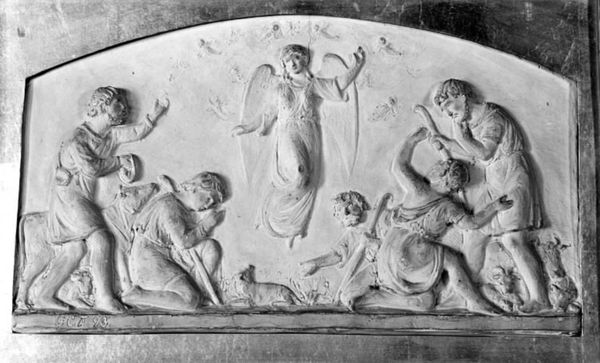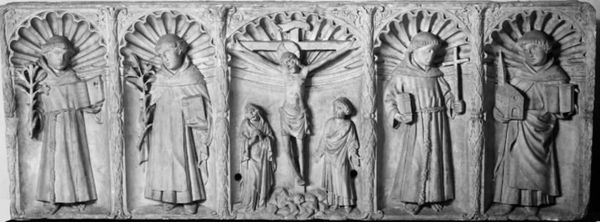
carving, relief, sculpture, plaster, wood
#
medieval
#
carving
#
narrative-art
#
stone
#
sculpture
#
relief
#
figuration
#
romanesque
#
sculpture
#
plaster
#
carved
#
wood
Dimensions: 16.2 cm (height) x 20.6 cm (width) (Netto)
Editor: This is Georg Christian Freund's "Kristi fodsell", or "The Nativity", from 1898. It’s a plaster relief that’s making me think about early Renaissance depictions of the scene. How does its historical context influence its reception, particularly its almost medieval aesthetic created so late? Curator: That’s a very insightful starting point. I’d suggest that the piece actually engages with the revival of interest in medieval and Romanesque art during the late 19th century. Freund, by employing a style reminiscent of earlier religious carvings, seems to want to imbue his work with a sense of timeless sanctity and authenticity. How might its presentation at the Statens Museum for Kunst shape public perceptions, compared to, say, its display in a church? Editor: Good point. Displaying it in an art museum shifts the focus from religious devotion to artistic interpretation. It becomes an object of aesthetic and historical interest rather than solely a focus for worship. Do you think this reframing was intentional on Freund’s part? Curator: Freund likely was aware of the changing role of religious art. Artists like him responded to the secularizing trends of the era by creating pieces that could function both as objects of faith and as works of art appreciated for their craftsmanship and historical allusions. So what do you make of the framing around this scene? Does it strike you as old, new or something else? Editor: The frame looks relatively modern and clean in contrast to the faux-antiquity of the relief. I wonder if that contrast intentionally highlights the work's dual identity as both historical artifact and contemporary creation. Thanks, that's given me a lot to consider about how the artwork is situated between different eras and interpretations! Curator: Absolutely! Considering art within the framework of its time and the spaces it occupies reveals how meanings evolve. Thanks!
Comments
No comments
Be the first to comment and join the conversation on the ultimate creative platform.

